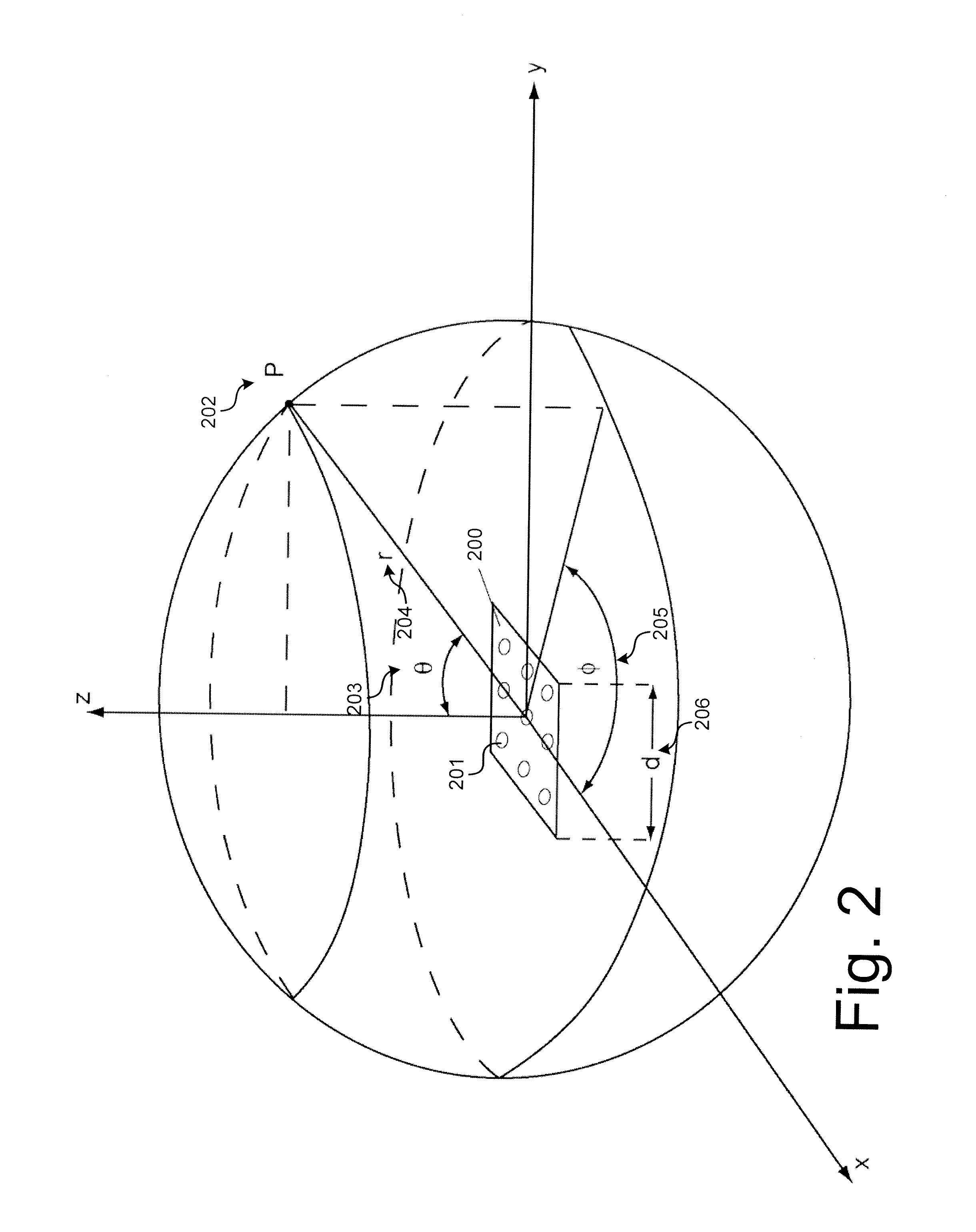Pseudo-apposition eye spectral imaging system
a spectral imaging and pseudo-apposition technology, applied in the field of spectral imaging systems, can solve the problems of insufficient miniaturized camera systems, bulky systems, and high cost, and achieve the effect of increasing the angle of inciden
- Summary
- Abstract
- Description
- Claims
- Application Information
AI Technical Summary
Benefits of technology
Problems solved by technology
Method used
Image
Examples
first embodiment
[0008]FIG. 1 illustrates the invention.
[0009]FIG. 2 illustrates variables and system parameters for assistance in describing various aspects of embodiments of the invention.
second embodiment
[0010]FIG. 3 illustrates the invention, illustrated in an exploded view.
[0011]FIG. 4 illustrates a spectral unit implemented in accordance with an embodiment of the invention.
[0012]FIG. 5 graphs the wavelength / angular dependence for incident light of three wavelengths and for a lens with refractive index n=1.55.
[0013]FIG. 6 illustrates a filter binarization process implemented in accordance with an embodiment of the invention.
[0014]Filter 7 illustrates a graph of a spectro-angular map implemented in accordance with an embodiment of the invention.
[0015]FIG. 8 illustrates a comparison between the geometric loci of focal points of a filter and lens combination and a lens alone.
[0016]FIG. 9 illustrates a spectral signature identification process in a hyperspectral imaging system implemented in accordance with an embodiment of the invention.
[0017]FIG. 10 illustrates a method of system operation implemented in accordance with an embodiment of the invention.
[0018]FIG. 11 illustrates a spec...
embodiment 300
[0033]In some embodiments, the image sensor 301 may comprise an sCMOS sensor array sensitive from (200-1,000 nm), and in further embodiments may include SWIR (1,000-1,700 nm) or MWIR+LWIR (3-14 micron) sensor arrays. A processing module 312, such as an FPGA or DSP image processor, may be coupled to the image sensor 301. In the illustrated embodiment 300, the arrays of filters 305, microlenses 304, and microchannels 303 are planar arrays, such as N×M grids (a 4×4 grid is shown). In other embodiments, the arrays may be spherical, semispherical, linear, or in some other configuration, and various numbers of elements may make up the arrays. In particular embodiments, the lens array 304 may comprise a microlens array with pitch ranges from 100 to 1,000 microns, focal lengths between 0.5 and 5 mm, and lens diameters from 150 to 1,000 μm.
[0034]The illustrated arrays 305, 304, and 303 provide the system 300 with a plurality of physical channels or spectral units 306. Each spectral unit 306 ...
PUM
 Login to View More
Login to View More Abstract
Description
Claims
Application Information
 Login to View More
Login to View More - R&D
- Intellectual Property
- Life Sciences
- Materials
- Tech Scout
- Unparalleled Data Quality
- Higher Quality Content
- 60% Fewer Hallucinations
Browse by: Latest US Patents, China's latest patents, Technical Efficacy Thesaurus, Application Domain, Technology Topic, Popular Technical Reports.
© 2025 PatSnap. All rights reserved.Legal|Privacy policy|Modern Slavery Act Transparency Statement|Sitemap|About US| Contact US: help@patsnap.com



